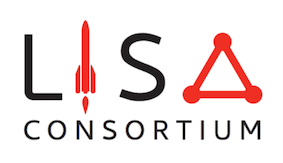Speaker
Description
The gravitational waves emitted by massive black hole binaries in the LISA band can be lensed. Wave-optics effects in the lensed signal are crucial when the Schwarzschild radius of the lens is smaller than the wavelength of the radiation. These frequency-dependent effects can enable us to infer the lens parameters, possibly with a single detection alone. In this work, we assess the observability of wave-optics effects with LISA by performing an information-matrix analysis using analytical solutions for both point-mass and singular isothermal sphere lenses. We use gravitational-waveform models that include the merger, ringdown, higher harmonics, and aligned spins to study how waveform models and source parameters affect the measurement errors in the lens parameters. We find that previous work underestimated the observability of wave-optics effects and that LISA can detect lensed signals with higher impact parameters and lower lens masses. Comparing lens populations obtained from the Press-Schechter mass function and the measured velocity function based on the SDSS, we find that the probability of observing wave-optics effects is highly sensitive to the abundance of low-mass lenses such as late-type galaxies and sub-halos and that this probability can be significantly higher than the probability of observing strong lensing.

